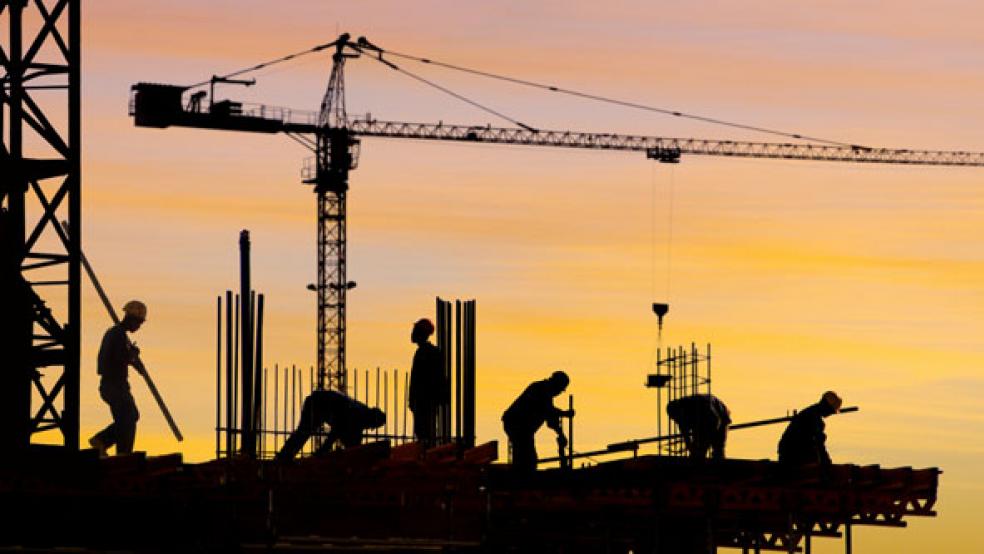When President Obama proposed a $50 billion national infrastructure bank in a Labor Day speech this year some state-level and union officials took heart that federal spending to upgrade or create new roads, rails and bridges would be coming their way. While the idea has some key backers in Washington and the business community, Obama has barely mentioned it since, underscoring the political reality that it's not likely to go anywhere soon.
The idea isn’t completely dead, but it is on life support. The Senate Banking Committee heard from several supporters of the idea Tuesday, including Pennsylvania Democratic Gov. Ed Rendell and UBS Americas Chairman Robert Wolf. But with high public opposition to government spending and Congress at a near-standstill before the midterm elections, a hearing may be all the attention the idea gets for the near future.
Sen. John Kerry, D-Mass., an emerging point man on Capitol Hill, says it is good economic policy to invest in long-term infrastructure projects in order for the United States to compete economically with emerging markets like China and Brazil. “Our growth and exports are directly tied to how our infrastructure operates,” said Kerry, who testified first at the two-hour hearing. “We are falling behind many of our main economic competitors, and the further we fall behind in this race, the harder it will be to catch up. A strong economy at home means a stronger America in the world.”
there, you're exposing the taxpayers.”
Rendell, who co-chairs the infrastructure advocacy group, Building America’s Future, warned that construction projects may be halted as stimulus funds dry up. “It's an important piece of the infrastructure puzzle,” he said. “In many ways it could be a linchpin to fixing and solving the puzzle, but it's a small piece.” Rendell said that concerns about economic growth should outweigh worries about the deficit.
Another Fannie Mae?
In addition to addressing deficit concerns, backers must convince critics like Sen. Richard Shelby, R-Ala., who fear the bank would become another government-sponsored enterprise (GSE) like Fannie Mae and Freddie Mac. “If you're putting the government guarantee there, you're exposing the taxpayers,” Shelby said.
Obama’s proposed $50 billion, six-year investment would be used to rebuild 150,000 miles of roads, restore 150 miles of airport runways, and to construct and maintain 4,000 miles of rail. The bank would create and fund projects through a competitive, merit-based process, but no one has worked on the details — not even the administration. Roy Kienitz, undersecretary for policy at the Department of Transportation, told the Banking Committee that the proposals were vague because they are “a work in progress.” The administration has yet to determine who would run the bank and authorize money for projects and what role Congress would play.
The bank would leverage public and private investment with the expectation it would be repaid with a high yield return for investors. “It would complement our current infrastructure financing programs in a manner that delivers taxpayers the best bang for their buck,” said Banking Committee Chairman Christopher Dodd, D-Conn.
Rendell suggested that the bank’s funding would be similar to other subsidy programs like Build America bonds, which lowered borrowing costs for state and local governments. Last year, the federal highway trust fund nearly ran dry before Congress rescued it with emergency cash. But his is only one of several competing plans.
now but there is no excuse for not doing it.”
Kienitz and Rendell both said to that accomplishing Obama's construction goals would require $50 billion in the first year and more funding after that. “We all agree that $50 billion doesn't begin to scratch the surface that the president has recommended,” Rendell said.
Wolf, who sits on the President's Economic Recovery Advisory Board, said the bank should be “a wholly-owned government corporation” to serve a broad range of infrastructure sectors including transportation, energy and water. “It should be capitalized with equity capital that comes solely from the U.S. federal government via the U.S. Treasury,” he said. “This will avoid the problems seen with the government sponsored enterprises, such as Fannie Mae and Freddie Mac, which are hybrid organizations chartered to be owned by private shareholders while benefiting from government sponsorship.”
The Treasury Department took control of Fannie Mae and Freddie Mac in 2008 and taxpayers have paid more than $150 billion to keep the mortgage giants afloat.
The idea for an infrastructure bank is hardly new. Banking Committee Chairman Christopher Dodd, D-Conn., and former Sen. Chuck Hagel, R-Neb., proposed legislation in 2007 that gained little traction. (Congress will lose a key infrastructure advocate when Dodd retires at the end of this session of Congress.) Rep. Rosa DeLauro, D-Conn., introduced a House version last year, and states like California and South Carolina have implemented a version of an infrastructure bank. In 2008, then-Sen. Barack Obama proposed a $60 billion plan focused on infrastructure projects.
Investment banker and former governor of the New York Stock Exchange Felix Rohatyn has been championing a national infrastructure bank for at least 15 years and says despite the proposal’s likely fate there is still reason to be optimistic. “It’s getting there,” Rohatyn told The Fiscal Times. “It may not be tomorrow or six months from now but there is no excuse for not doing it. I don’t think it is a good idea to just give up before the starting line is crossed.”





